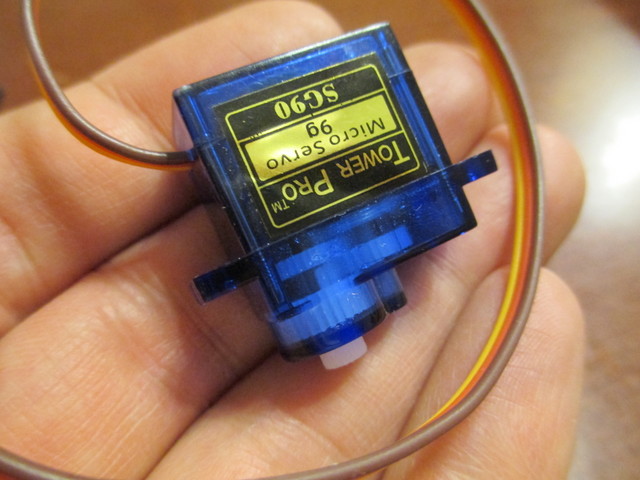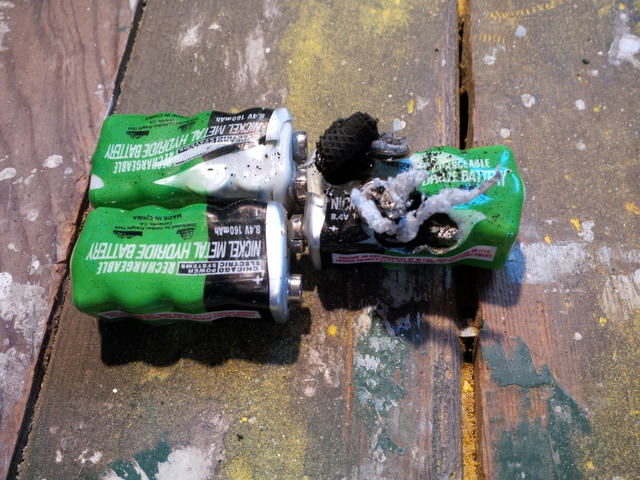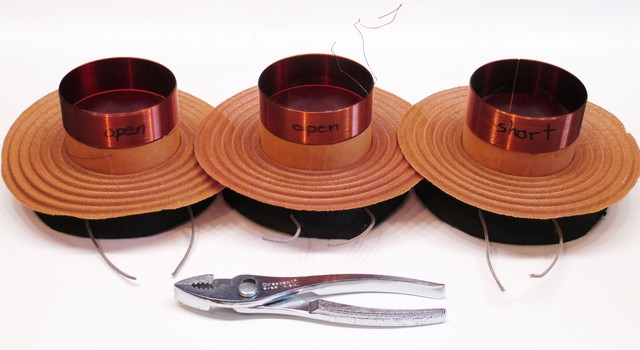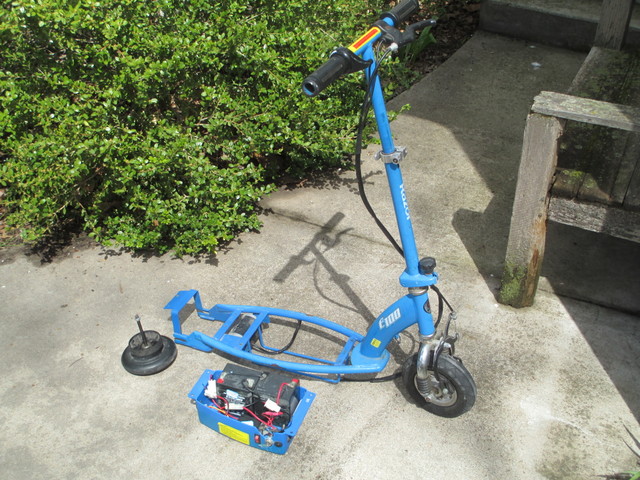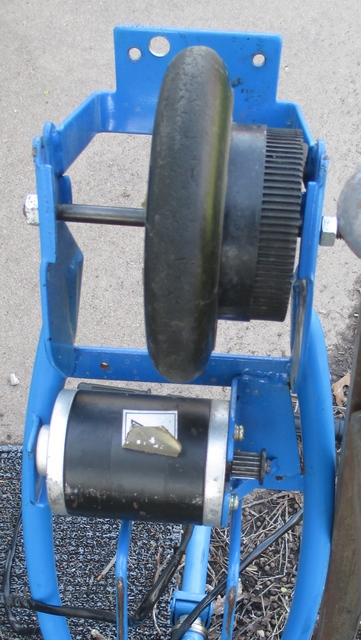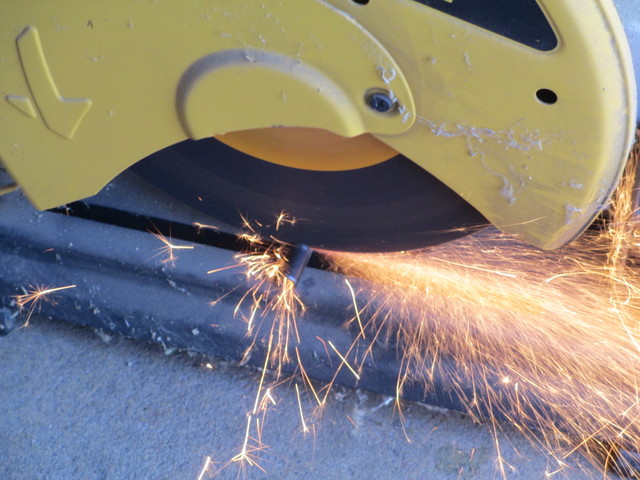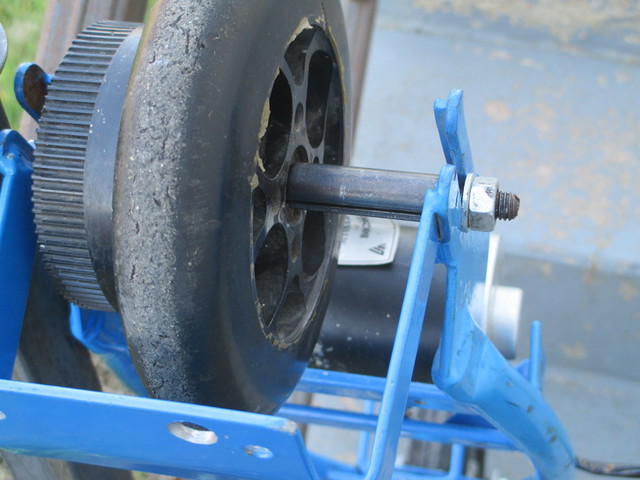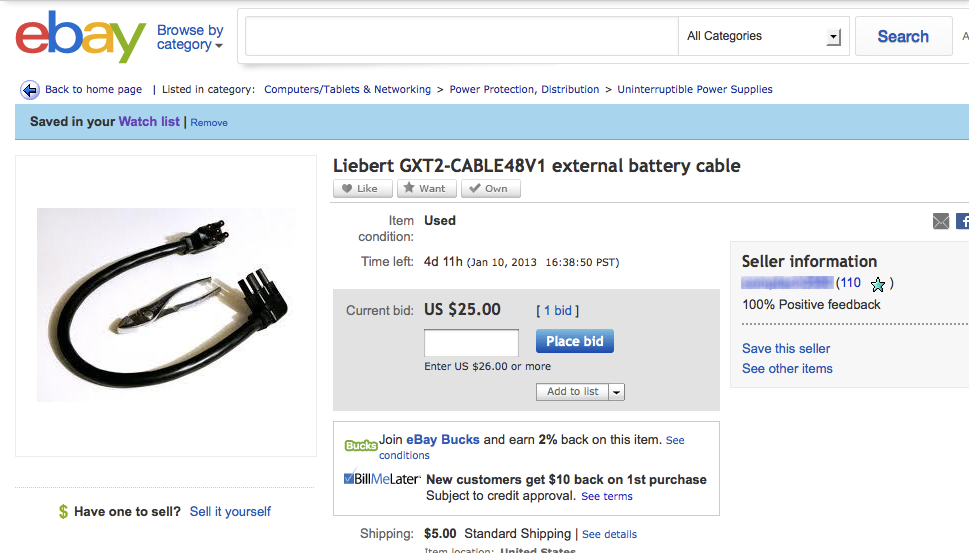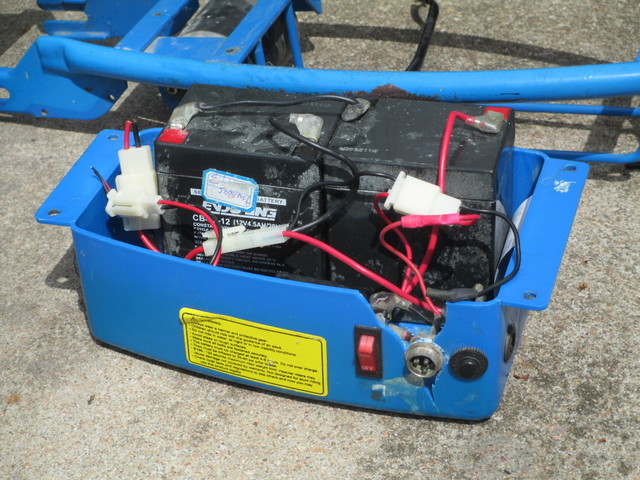
I tend to assume that batteries I happen upon will not be charged. Also that lead-acid batteries I happen upon will be low on water, even so-called sealed lead-acid batteries.
I wanted to start charging the batteries from my “new” scooter while working on other aspects of the project and the scooter didn’t come with a charger — I’ll deal with that later. Not knowing much about the wiring circuit yet, I didn’t want to connect an external charger to the batteries while they were still in-circuit and chance damaging the speed controller, so I needed to disconnect and remove them.
Wiggle wiggle wiggle <grunt> wiggle pull <grunt> WIGGLE WIGGLE BEND <grunt>
Wha?
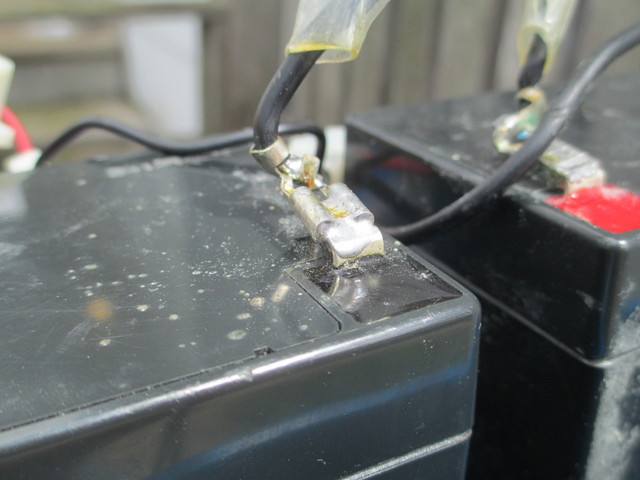
Who does this??? When they said solder the quick-disconnect terminals, they meant the wire side.
Fine. My uncle’s iron and a pair of pliers solved that problem.
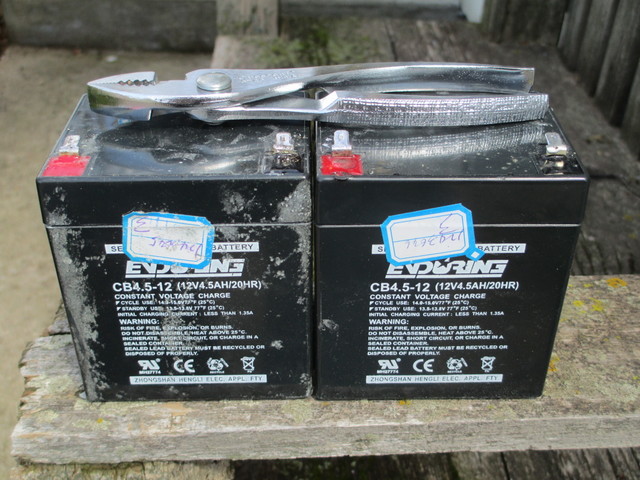
Two batteries, extricated and not yet cleaned.
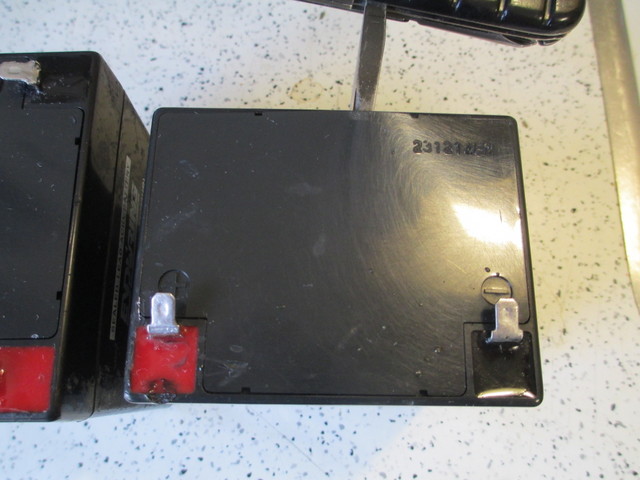
In spite of being “sealed,” you can pry off the cover (preferably after cleaning, which I did first with Goo-Gone and then with dish soap and water)
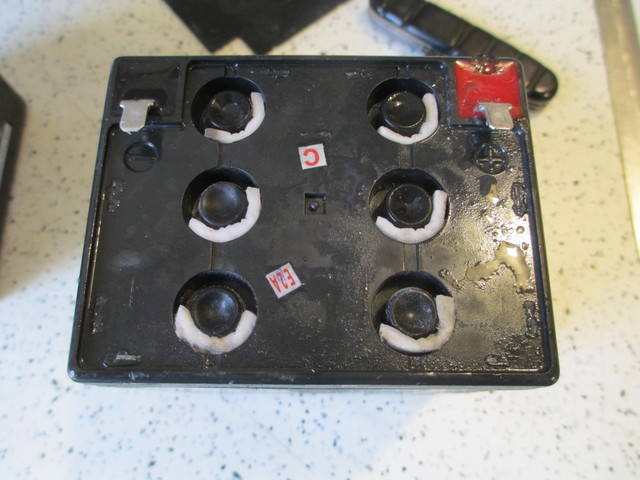
and get to the cell caps, each with a little absorbent pad in case the cell venting carries too much moisture.
I could see no water in any cell of either battery. I borrowed a jug of distilled water from my folks (I don’t know why Mom always has some, but she does) and started filling them up … after taking measurements.
|
Battery 1 |
Battery 2 |
| Initial |
11.68 V |
9.99 V |
| After adding water |
11.62 V |
9.92 V |
I filled each cell, waited for air bubbles to trickle to the top, refilled, waited, refilled, waited … I’m guessing between the initial fill and while charging, I ended up putting at least 10 ml of water into each cell.
Then put battery 1 on my variable power supply with the voltage set to 13.8 V and the current limited initially to 0.1 A, raising the current limit to 0.3 A as it was clear that nothing horrible was happening. I checked on it every half-hour to hour, frequently refilling at least one cell in which I could no longer see any water.
After about four hours, it was up to 13.5 V. The water level in the cells had risen to overflow the opening and fill each reservoir. If I watched long enough, I could see the water in a couple of cells <pop>, indicating they were just starting to gas and it was time for me to stop this method of charging for the day. (More on that on a subsequent day, hopefully tomorrow.)
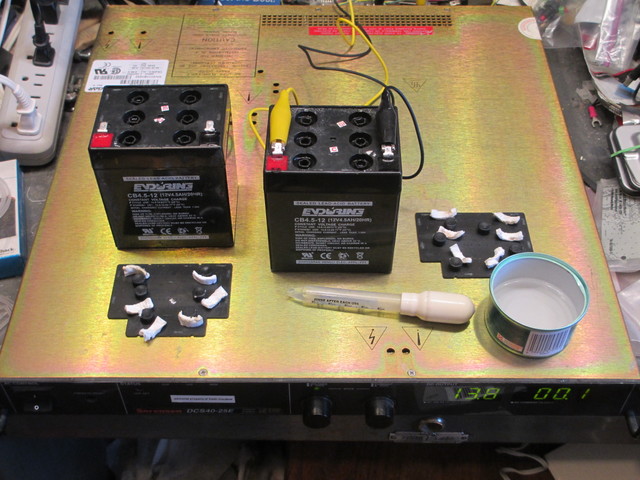
While battery 1 was charging, I was also checking water levels in battery 2 and refilling low cells, just sitting on the counter.
Recalling that it had an initial 10 V charge to battery 1′s 11.7 V, noting that they had been connected in series, and knowing that the worst cell in a battery generally has a cascading failure, I expected a different charging experience from battery 2, and I was quite right.
I connected it to the power supply and it immediately showed 13.8 V at a 0.1-A current draw. Now, about an hour later, it’s at 13.5 V and 0.3 A and most of the cells have overflowed. It’s nearly done charging but I haven’t put nearly as much energy into it as I was able to put into battery 1 — that is to say, it’s not “taking” as much of a charge.
|
Battery 1 |
Battery 2 |
| Initial |
11.68 V |
9.99 V |
| After adding water |
11.62 V |
9.92 V |
| After charging |
12.68 V |
12.48 V |
Tomorrow, schedule willing, a load test and an attempt at desulfation.
![]()

